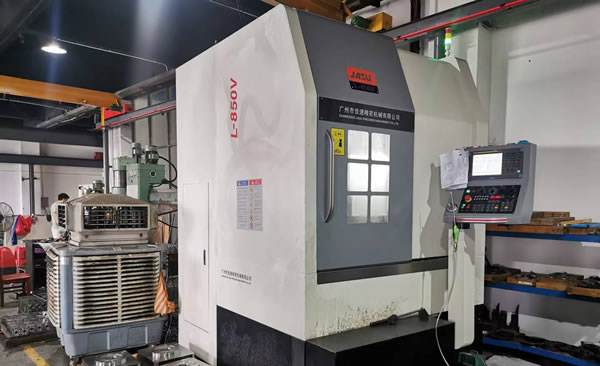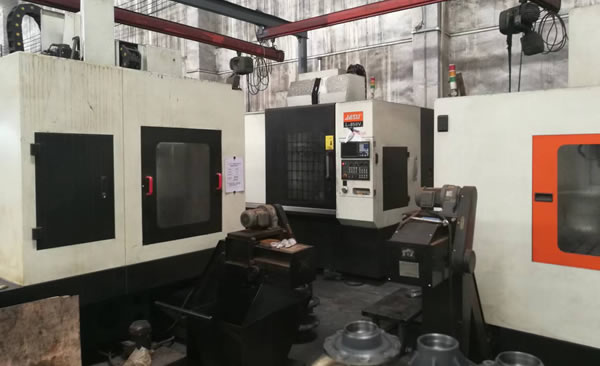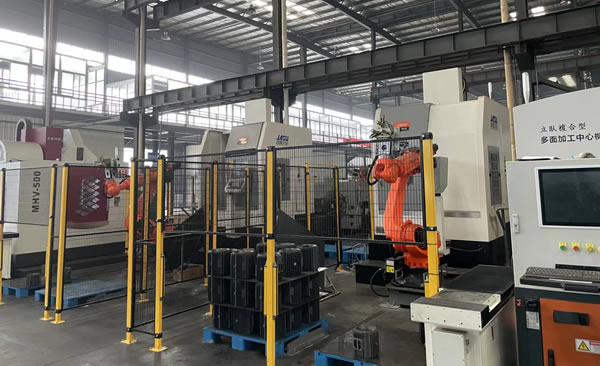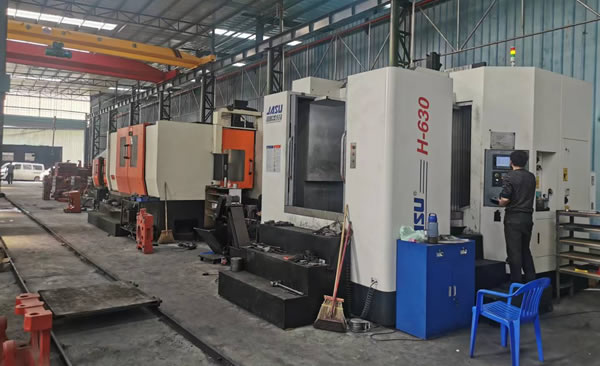When many people complain that they work like robots every day, industrial robots can already work like people.
Handling, sorting, palletizing, transportation... Yesterday, in the marketing center of Wuhan Yikang Flour Co., Ltd., the reporter watched the whole process of flour from offline to storage. Xiong Wei, the person in charge of the center, pointed to the stacking robot that was running at a high speed and said with a smile: "It doesn't need to rest, won't scold the boss, won't pay overtime, won't change jobs, and won't jump off buildings."
Large investment makes SMEs "unable to afford"
It's hard to see anyone walking in the Yikang flour factory. Xiong Wei walked to the console, gently pressed the start switch, and the flexible arm of the palletizing robot began to "open its teeth and claws": two bags of flour were grabbed from the production line, the body was rotated 90 degrees, and placed precisely in the designated area. The whole action took only a few seconds, and it was completed in one go. Within a few minutes, 60 bags of 25kg flour had been neatly stacked into a cube.
"If it is manual sorting and stacking, the efficiency will not be so high, nor will it be so neat." Xiong Wei introduced, "Industrial robots are in place at one time, easy and fast."
This industrial robot was purchased from Japan by Yikang Company in 2011 with an investment of 1.2 million yuan. It was officially put into use in May 2012 and is expected to recover the cost in five years. Xiong Wei calculated that the robot can work 10 hours a day and can complete 600 tons of work, which is equivalent to 20 porters working 24 hours without interruption. "No one is willing to do such repetitive heavy physical work for 300 yuan a day, which is a great help."
A palletizing robot costs 1.2 million yuan. For many small and medium-sized enterprises, the investment pressure is really huge. Fu Haibo, general manager of Hubei Tianshunyuan Environmental Protection Engineering Co., Ltd., said that he had refused to accept several orders since the Spring Festival due to the difficulty of recruitment. When the reporter suggested that he introduce robots, he said: "It is really not affordable to invest tens of millions of yuan at a time. After the company grows, it may consider." Localization, the price is expected to reduce again as a barrier to the use of robots. To speed up the promotion and application of robots, how much room is there for the price to fall? In the field of industrial robot R&D and manufacturing, brands such as Yaskawa, Kuka and ABB from developed countries such as Japan and Germany occupy more than 70% of the global market. In contrast, the R&D and manufacturing of industrial robots in China started late, and the core technology was limited by people. Song Xiaogang, secretary-general of the China Robotics Industry Alliance, believes that the price cannot be reduced by relying on imports. Localization has become the key to the promotion and application of industrial robots. At present, the world's most high-end palletizing robot body has an accuracy of 0.01 mm and a price of 400000 yuan. The domestic robot body developed by Wuhan Fenjin Power Company has an accuracy of 0.1mm, but its price has dropped to more than 200000 yuan. "There is indeed a gap in precision, but our robots are mainly used for heavy physical labor such as stacking and handling, and the precision is enough. They are competent for work and reduce costs, so why not?" said Xu Jianshui, the general manager of the company. In addition, domestic manufacturers have more advantages in terms of after-sales service. "Our after-sales service can arrive at the site within 2 hours, while it takes two days for foreign brands, and there is also a round trip expense." Xu Jianshui said that compared with the use of foreign robots, the overall cost of using domestic robots has decreased by at least 30%.
Related Articles
Related Products

...
Product Details

...
Product Details

...
Product Details

...
Product Details